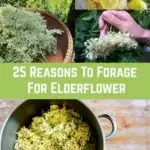
Elderflower is an ingredient with more potential than you may imagine.
This common hedgerow find is often used to make a delicious seasonal cordial. But there are also plenty of other ways to use elderflower from your garden or your local area. Read on to find out more.
I love elderflower. It is one of the delights in my garden at this time of year. We have two large elder trees covered with blooms. And each year, I head out to pick some to use in my kitchen.
They are an ingredient that works well with other seasonal berries and fruits – such as gooseberries, and strawberries, for example.
Elderflowers also have plenty of non-culinary uses – as you will find out below. If you have elders close to where you live, I am sure that by the end of this article, you will be heading out to harvest some yourself.
What is Elderflower?
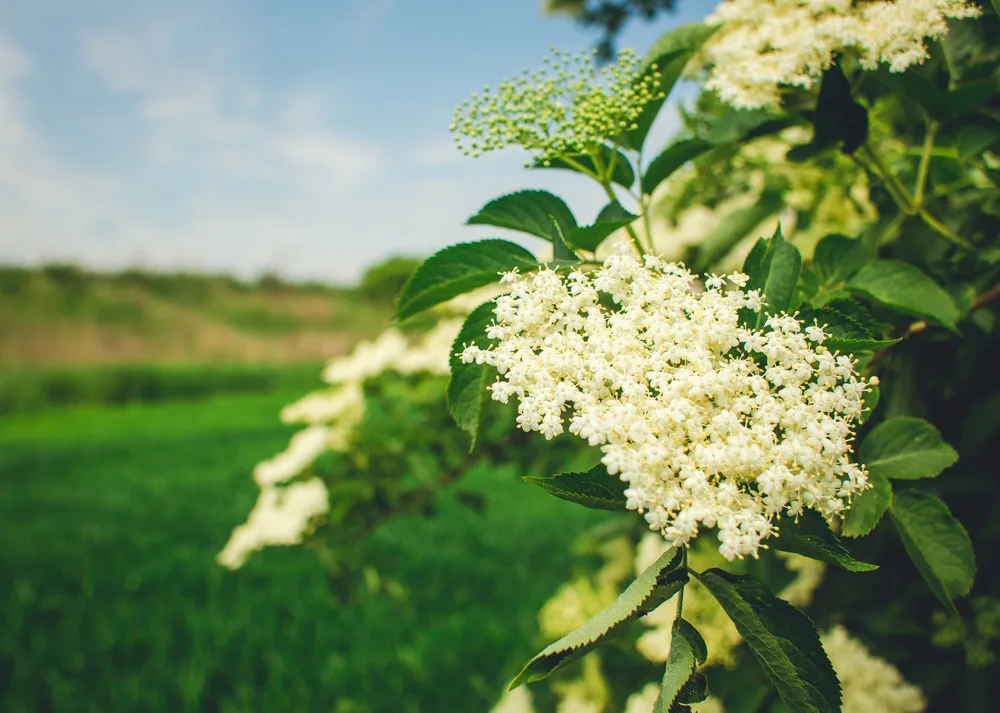
Elderflower is the name given to the blossom of the elder tree (Sambucus Nigra).
This is a tree with a lot of potential. I would highly recommend making space for one in your garden. Though elder is often found in the wild or in hedgerows, it can be a good choice for a garden plant too.
Elder is a good plant choice for many temperate climate gardens. It can grow well in areas with a cold winter climate, and in a wide range of soil types and conditions. It is a fantastic pioneer species that can be used in ecosystem restoration or afforestation. And these trees or shrubs also make very good shelter belts or hedges – even in exposed maritime locations. Elders are great for attracting wildlife too.
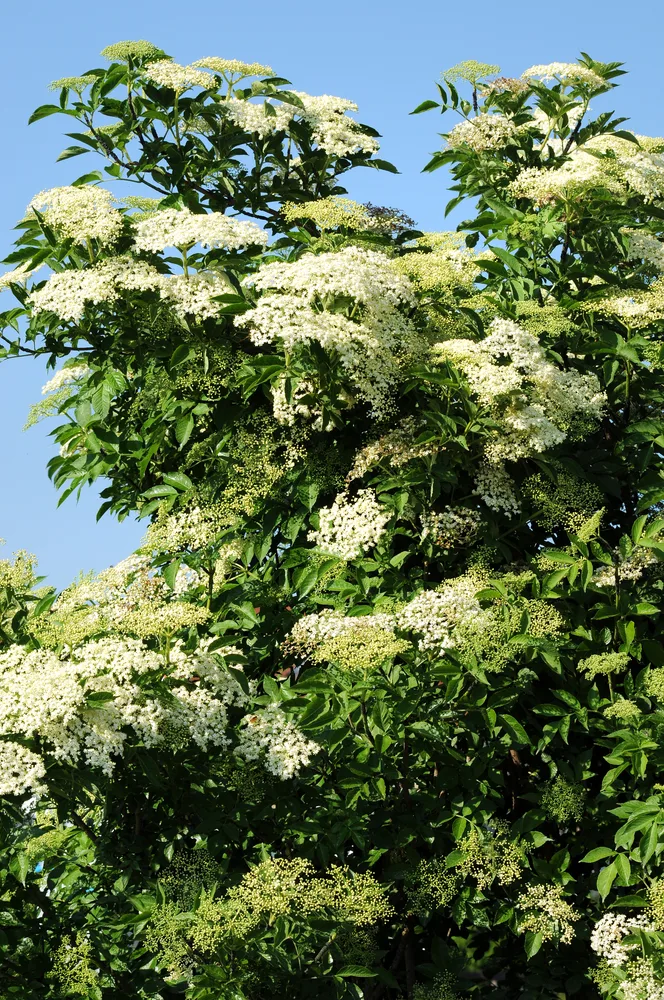
Elderflowers are just one of the yields that can be obtained from the elder tree. Be sure to leave plenty of the flowers on the tree, and you can also obtain a harvest of elderberries later in the year.
Foraging for Elderflower
One the the good things about foraging for elderflower is that it is difficult to mistake it for anything else. Whether you are in your own garden or out and about in your neighborhood, elderflowers are easy to find and identify.
Once you are familiar with the smell of elderflowers, you will be able to detect it from far away.
The white or cream-colored flowers are borne in large clusters on the shrubs or trees, appearing from late spring and into early summer.
The easiest way to harvest the flowers is simply to cut off a few of these clusters. But be sure to leave plenty for wildlife, and to grow into berries that you can harvest later in the year.
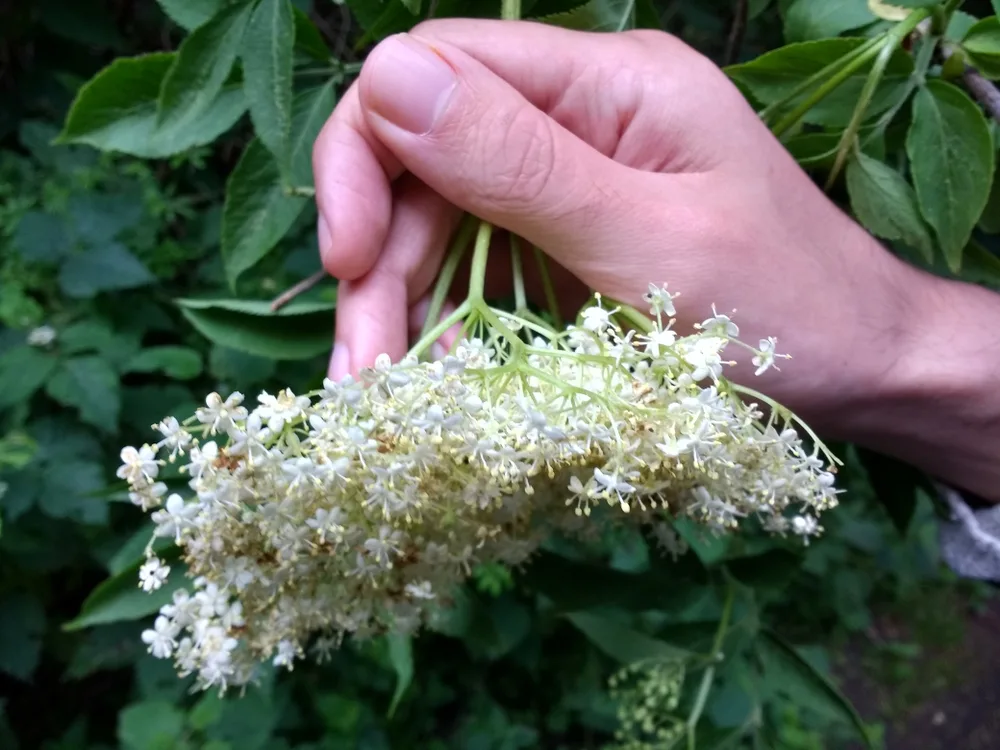
Personally, I leave plenty to turn into berries. We use these in a wide range of ways – but mostly, on my property, we use them to make elderberry wine.
Once it has matured for a year or two, we find that this wine is equivalent to any fine red wine. This really has been a home wine-making success story.
Unlike some other home-made wines, which can be something of an acquired taste, elderberry wine really doesn’t taste much different to a decent grape wine once matured.
Selecting Elderflowers
When foraging for elderflowers, make sure you do not pick them from a polluted area. And head out to collect them when they are at their best – late in the morning on a dry day is ideal.
You are looking for flower heads on which all the flowers have opened fully, but without any wilting or brown patches. The flowers should smell floral and sweet. If they have an unpleasant smell – they are past their best. (Some people think this smell is a little like cat-pee!)
Get them indoors as quickly as possible, and use them or process/dry them straight away. Don’t wash them, or you will lose the delicate fragrance of the pollen. Instead, leave them to dry/ for insects trapped on them to move away, before you process them and use them in one of the recipes described below.
Uses for Elderflower
Elderflowers have a huge range of culinary uses. The most common way to use them is to make a simple cordial. But you can most definitely branch out, since there are plenty of other potential options to consider.
Here are just some of the many recipes out there that you might like to make this year:
Elderflower Cordial
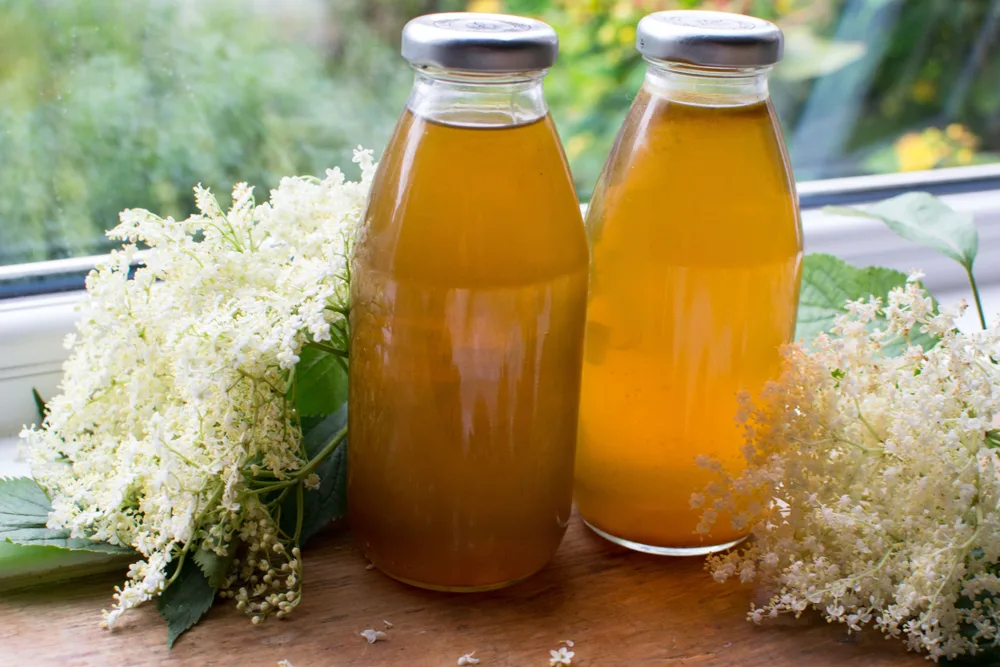
Elderflower cordial is most people’s go-to recipe for this ingredient. But just because it is so common, that does not mean that it is not worth making. Here is one recipe for this simple classic:
Elderflower cordial @ veganonboard.com.
I myself make something similar. But I switch out the lemons for fresh gooseberry juice. (Because it gives similar tartness and I can grow gooseberries in my garden.) You can also use honey rather than sugar in elderflower cordial if you prefer.
Elderflower ‘Champagne’
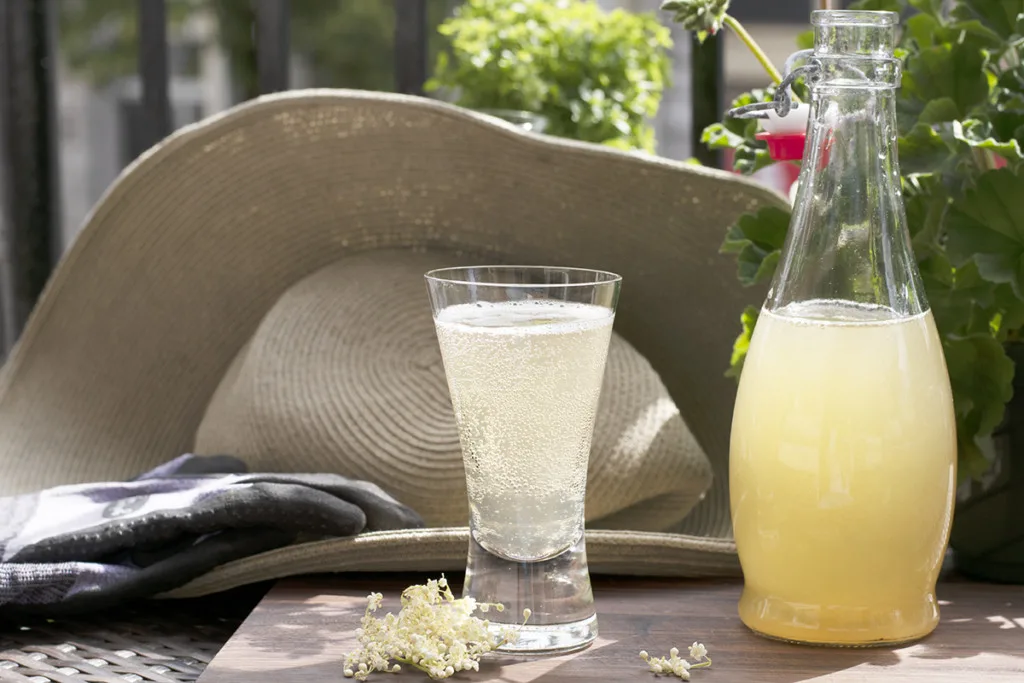
Wild ermentation can turn a simple elderflower cordial into a fresh and fragrant elderflower fizz, elderberry sparkling wine or ‘champagne’.
Here is Rural Sprout author Tracey’s delicious recipe for this fabulous summer favourite:
Elderflower champagne @ RuralSprout.com
Elderflower Cocktails
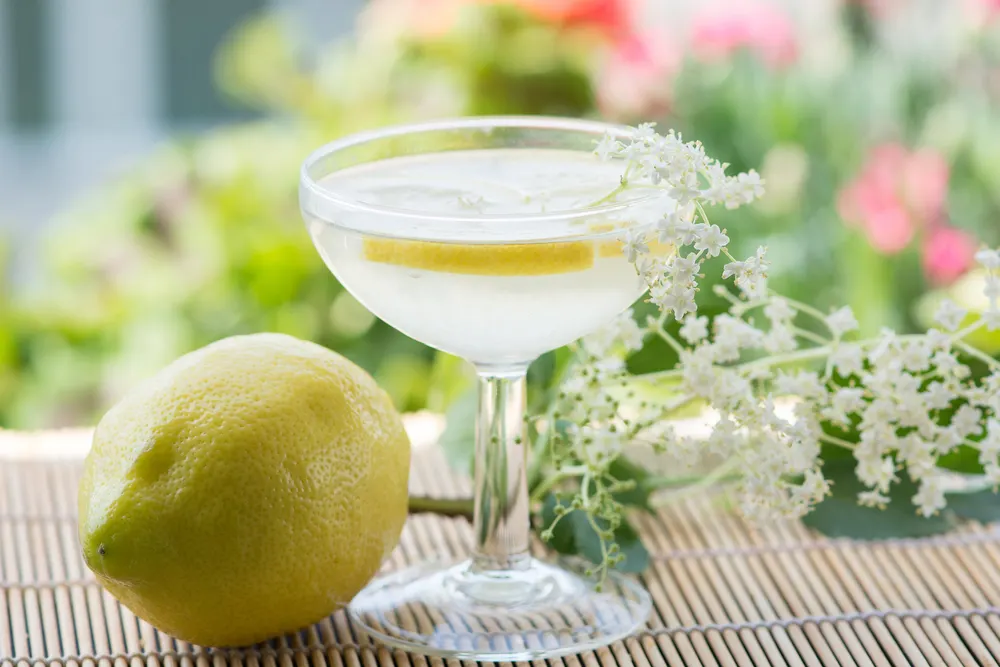
Even if you don’t fancy making an alcoholic drink from scratch, you can still use elderflowers alongside some of your favourite tipples. Here are a few examples:
Cucumber Elderflower Gimlet @ cookieandkate.com.
Elderflower, Gin and Prosecco Cocktail @ garnishwithlemon.com.
Elderflower Peach Bellini @ vikalinka.com.
Gooseberry and Elderflower Compote
Elderflowers are also excellent for adding a little floral something to a range of fruit compotes – great for breakfasts or desserts. Here is one example:
Green Gooseberry and Elderflower Compote @ goodfoodireland.ie.
Elderflower Granita
Another idea is to make a refreshing granita – perfect for a palette cleanser, or to refresh you on a hot day.
Elderflower Granita @ peonylim.com
I make something similar – but again, with gooseberries rather than lemons, to make the most of this other seasonal ingredient from my garden.
Strawberry and Elderflower Fool
Elderflower also works very well alongside another season ingredient – strawberries. Check out, for example, this recipe for Strawberry and elderflower fool:
Strawberry and Elderflower Fool @ prestige.co.uk.
Strawberry and Elderflower Sorbet
Another great suggestion is to combine strawberries and elderflower in a sorbet – a wonderfully summery dessert for this time of year:
Strawberry and elderflower sorbet @ beyondsweetandsavory.com.
Elderflower, Thyme and Lemon Ice Lollies
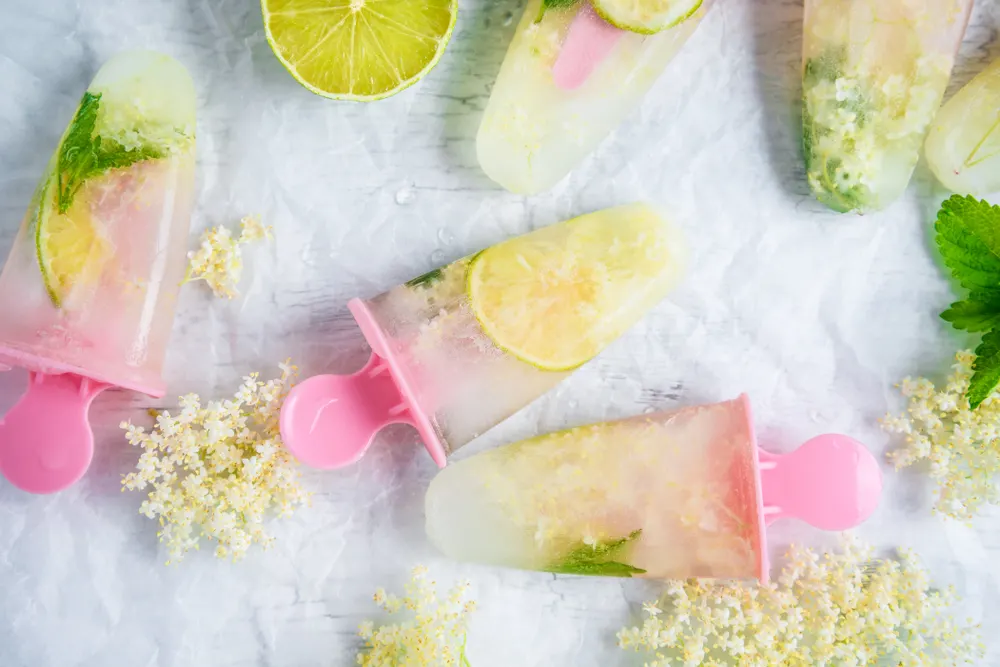
Or how about making some herbal ice lollies for another delightful summer treat?
Elderflower, Thyme and Lemon Ice Lollies @ olivemagazine.com.
Rhubarb Elderflower Syllabub
Here’s a more traditional treat that pairs elderflowers with another seasonal yield – rhubarb.
Rhubarb Elderflower Syllabub @ macaronsandmore.com.
Elderflower Custard
Elderflowers also work well in custard, especially when paired with tart fruits, as in this recipe:
Elderflower Custard Tart With Poached Gooseberries @ nathan-outlaw.com.
Elderflower Jelly
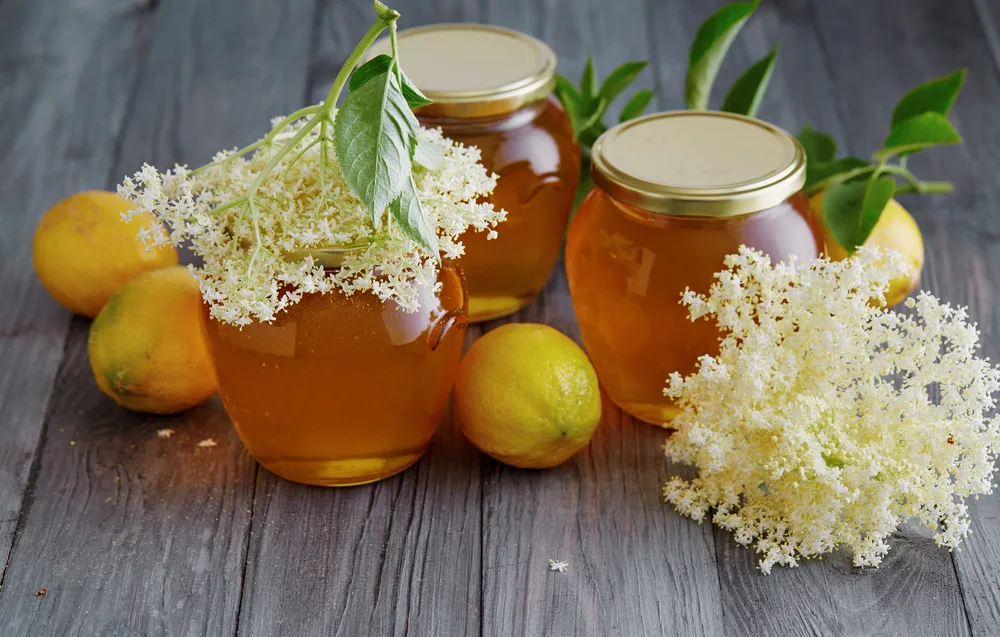
Or you could use elderflowers to make some jelly:
Elderflower Jelly @ theguardian.com.
Elderflower Cakes
Elderflowers also work well in a number of baked goods. Here are just a few of the interesting elderflower cake recipes to consider:
Lemon Elderflower Cake @ livforcakes.com.
Lemon and Elderflower Drizzle Cake @ thehappyfoodie.co.uk.
Strawberry and Elderflower Cake @ donalskehan.com.
Elderflower Tempura
Some tasty tempura or elderflower fritters are also a fun way to use up fresh elderflowers.
Elderflower Tempura Fritters @ greensofdevon.com.
Elderflower Jams
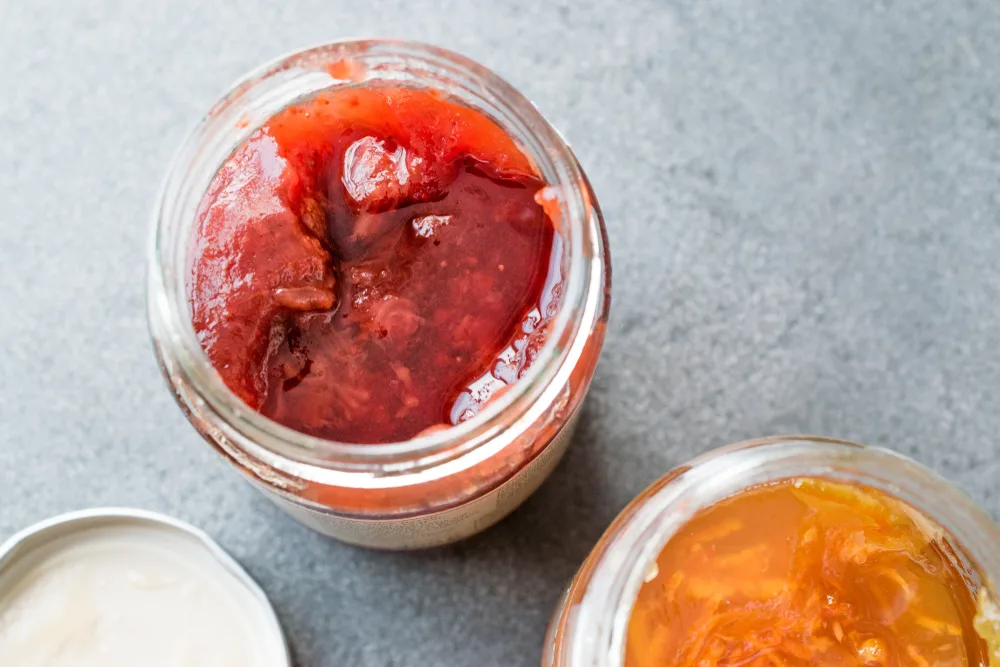
Perhaps my very favourite way to use elderflowers is to add them to home-made jams. They add a floral muscatel flavour to fruity jams of the season, and you can use them to make a jam on their own, or combine them with a number of other seasonal ingredients. Here are a few recipes to consider:
Elderflower Jam @ jam-making.com
Strawberry and Elderflower Jam @ fabfood4all.co.uk.
Rhubarb and Elderflower Jam @ scottishforestgarden.wordpress.com.
Non-Culinary Uses
But elderflowers are not just for eating or drinking. Elderflowers have a long history of use in herbal medicine, and are also used in a range of lotions, distillations, ointments, etc.. Here are a few more non-edible recipes to consider:
Elderflower Water @ fieldfreshskincare.co.uk
Elderflower Eye Cream @ joybileefarm.com.
Anti-Ageing Elderflower Salve @ simplybeyondherbs.com.
Elderflower and Lavender Soap @ lovelygreens.com.
Elderflower Lotion for Rough, Chapped Hands @ fieldfreshskincare.co.uk.
The 25 examples given above are just some examples of the ways in which elderflowers can be used. This versatile ingredient really can be used in a surprising number of ways.
So this year, consider moving beyond the classic cordial and trying something new with this seasonal treat.

Get the famous Rural Sprout newsletter delivered to your inbox.
Including Sunday musings from our editor, Tracey, as well as “What’s Up Wednesday” our roundup of what’s in season and new article updates and alerts.


